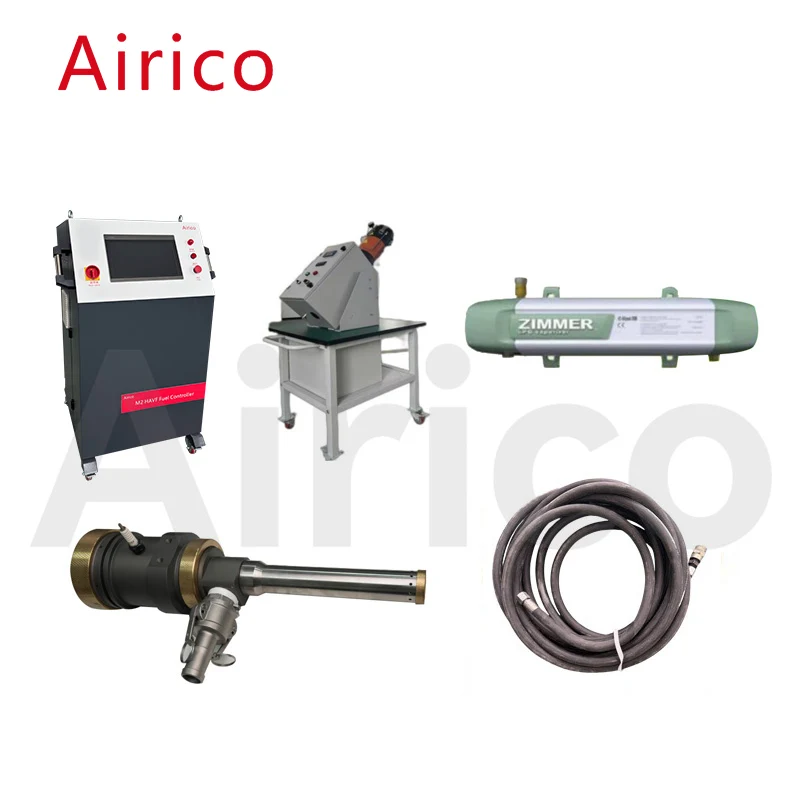Cold spray, or Cold Gas Dynamic Spray (CGDS), is an advanced surface coating technology that has gained significant attention due to its unique characteristics and diverse applications. This technology involves propelling solid particles at high speeds using compressed gas to form dense coatings upon impact with a substrate. While cold spray offers numerous advantages, it also has its share of disadvantages. This article delves into the pros and cons of cold spray technology.

One of the most significant advantages of cold spray is its compatibility with heat-sensitive materials. Unlike thermal spray processes, which involve high temperatures, cold spray operates at or near room temperature, preserving the chemical composition and microstructure of the coating material. This makes it ideal for depositing coatings on thermally sensitive substrates, such as polymers and certain metals.
Cold spray coatings exhibit low residual stresses, which are often compressive. This is due to the rapid solidification and plastic deformation of the particles upon impact. Compressive stresses are beneficial as they can enhance the coating's adhesion and durability.
Unlike some other coating processes, cold spray can be performed in open (non-inert) environments. This eliminates the need for expensive and complex vacuum or inert gas chambers, reducing costs and simplifying the process.
Cold spray can be used to deposit a wide range of materials, including metals, ceramics, and plastics. This versatility makes it suitable for various applications and industries.
The coatings produced by cold spray exhibit high bond strength to the substrate due to the mechanical interlocking and plastic deformation of the particles upon impact.
Cold spray is relatively environmentally friendly, as it does not generate harmful emissions or waste products. Additionally, the sprayed powder can often be recycled and reused, reducing material waste.
One of the main disadvantages of cold spray is its limitation in terms of part geometry. Complex shapes and internal passages can be challenging to coat uniformly due to the directional nature of the spray. This can lead to areas with inadequate coverage or thickness variations.
Cold spray coatings can sometimes exhibit lower density and accuracy compared to other coating processes. This is due to the porosity and roughness that can result from the high-speed particle impact. While these issues can be mitigated through optimization of process parameters, they remain a concern for some applications.
In some cases, the high-speed impact of particles can lead to embrittlement of the coating material. This can reduce the coating's ductility and increase its susceptibility to cracking and failure. Material embrittlement is more prevalent in certain materials, such as brittle ceramics, and must be carefully considered during the selection of coating materials.
While cold spray equipment has become more affordable and accessible over time, it still requires a significant initial investment. Additionally, the operational costs, including the cost of compressed gas and powder materials, can be high for large-scale or continuous production applications.
Cold spray is a complex process that requires careful optimization and control of various parameters, such as gas pressure, particle size, and spray distance. Improper adjustment of these parameters can lead to poor coating quality and performance. Therefore, skilled operators and advanced process control systems are often required to achieve optimal results.
In conclusion, cold spray technology offers numerous advantages, including compatibility with heat-sensitive materials, low thermal stresses, and the ability to operate in open environments. However, it also has its share of disadvantages, such as restrictive part geometry, low density and accuracy, and material embrittlement. Understanding these pros and cons is crucial for selecting the most appropriate coating technology for a given application. By carefully weighing the benefits and drawbacks of cold spray, engineers and technicians can make informed decisions that lead to successful coating solutions.

